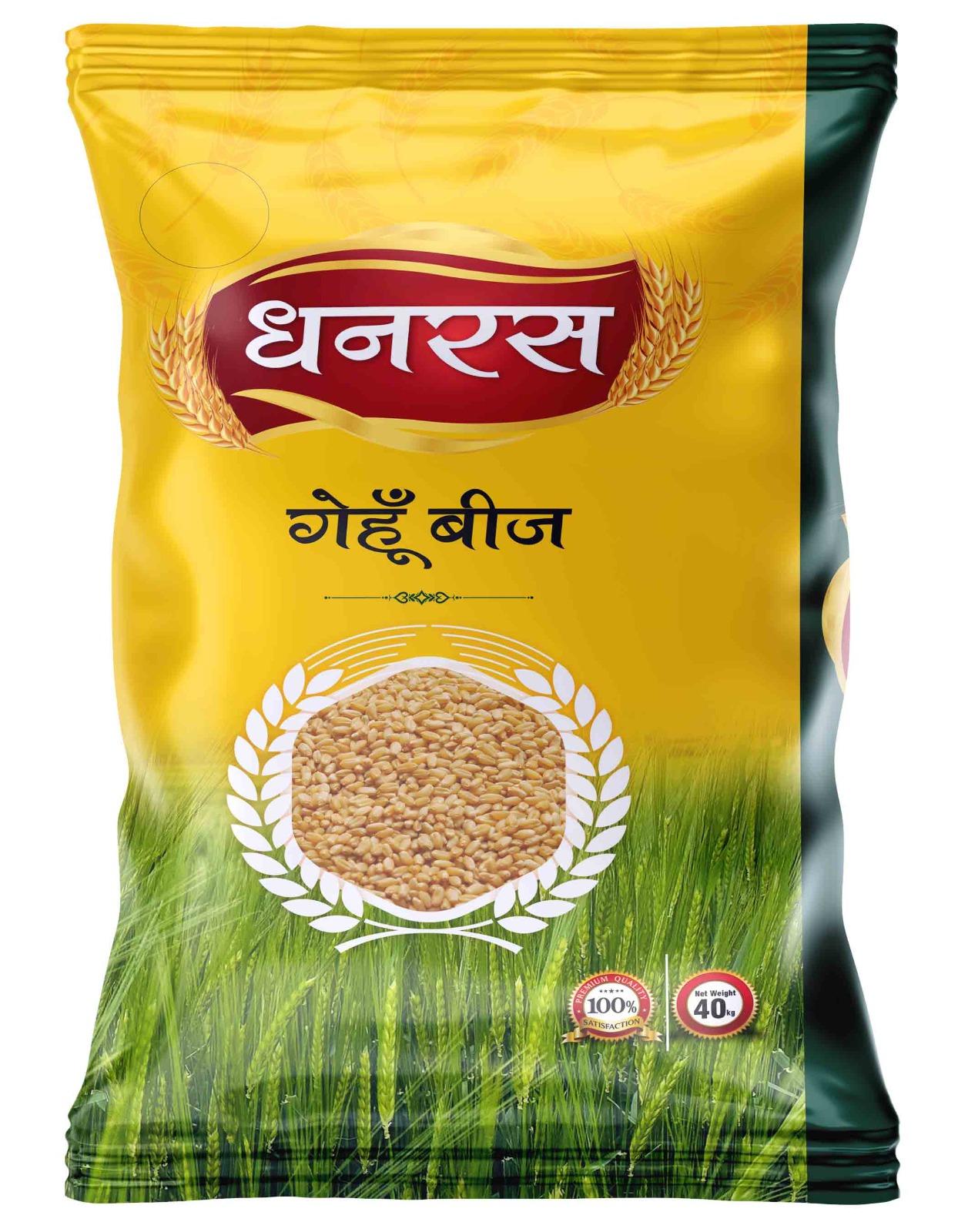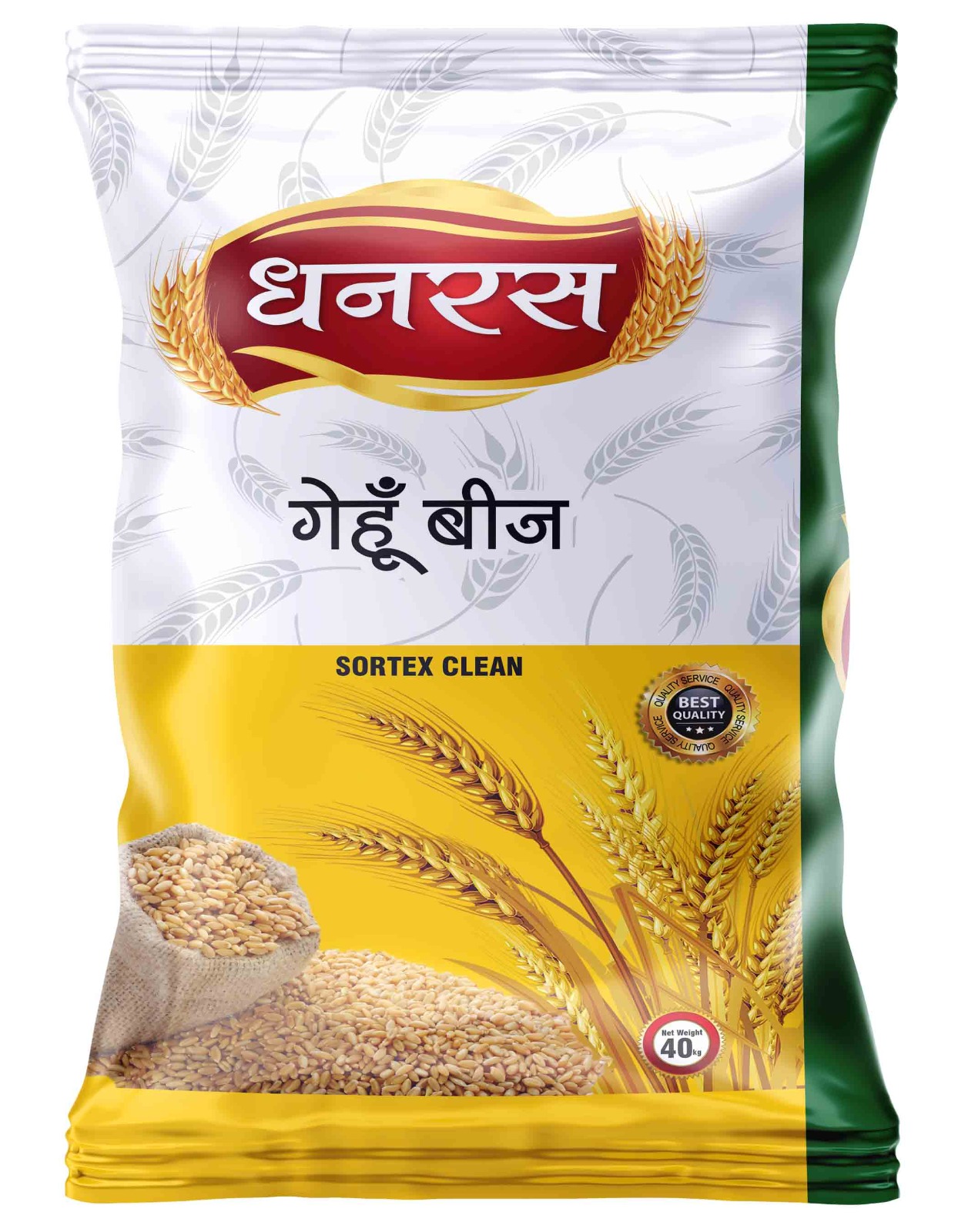Wheat Seeds
Wheat seeds are oblong, golden to pale yellow grains with a papery seed coat, rich in carbohydrates and moderate protein content, and mainly composed of endosperm, husk, and embryo. These seeds are sown mainly in autumn for winter wheat or in spring for spring wheat, with growth stages including germination, tillering, jointing, heading, and ripening, making wheat an essential staple food crop globally for human consumption and industrial use.
Varieties
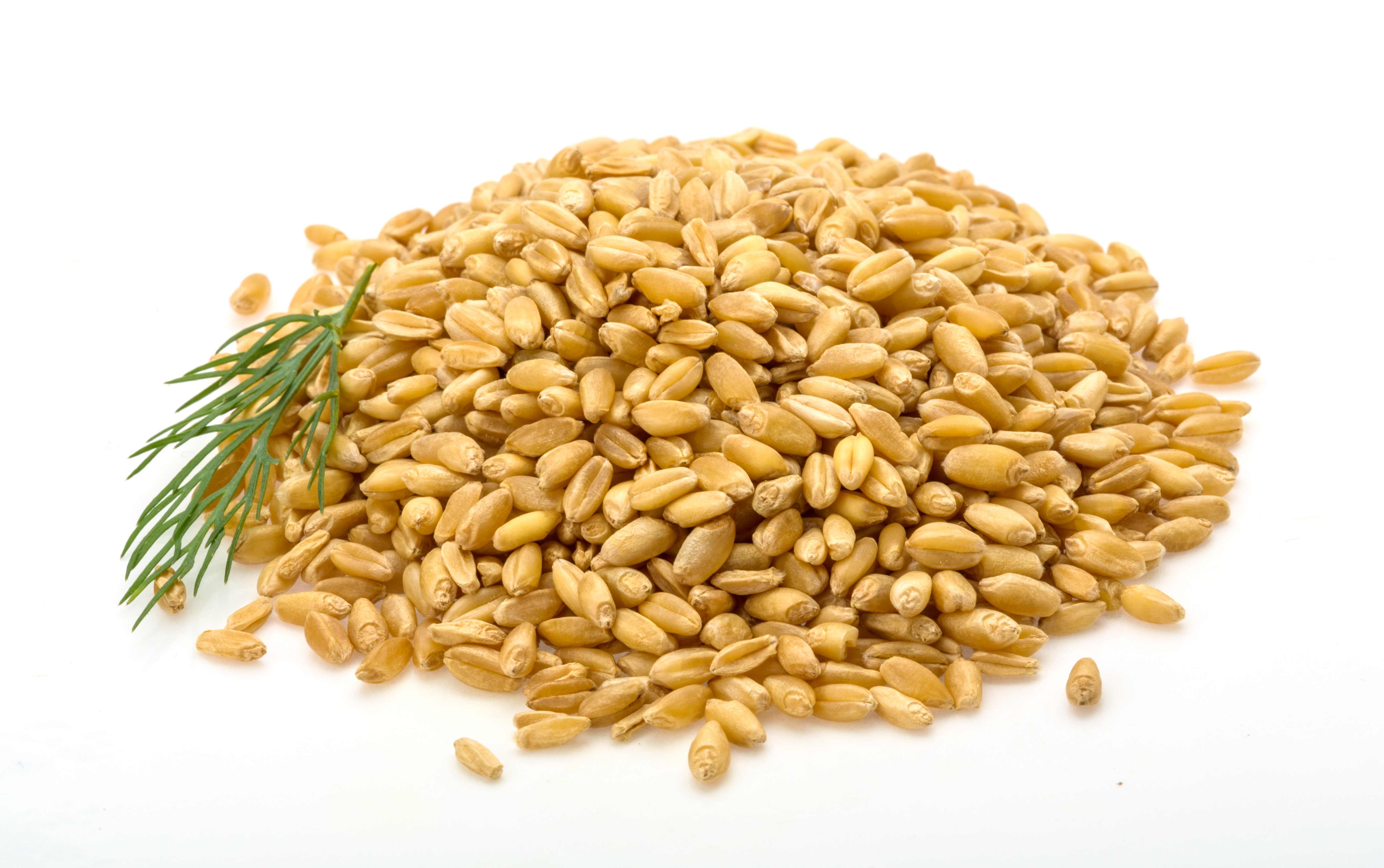
Lok-1
Lok-1 is a popular wheat variety cultivated widely in central and western India. It is known for its high yield potential, good grain quality, and adaptability to different soil and climate conditions. Farmers prefer Lok-1 because it matures in a moderate duration and performs well under irrigated conditions.
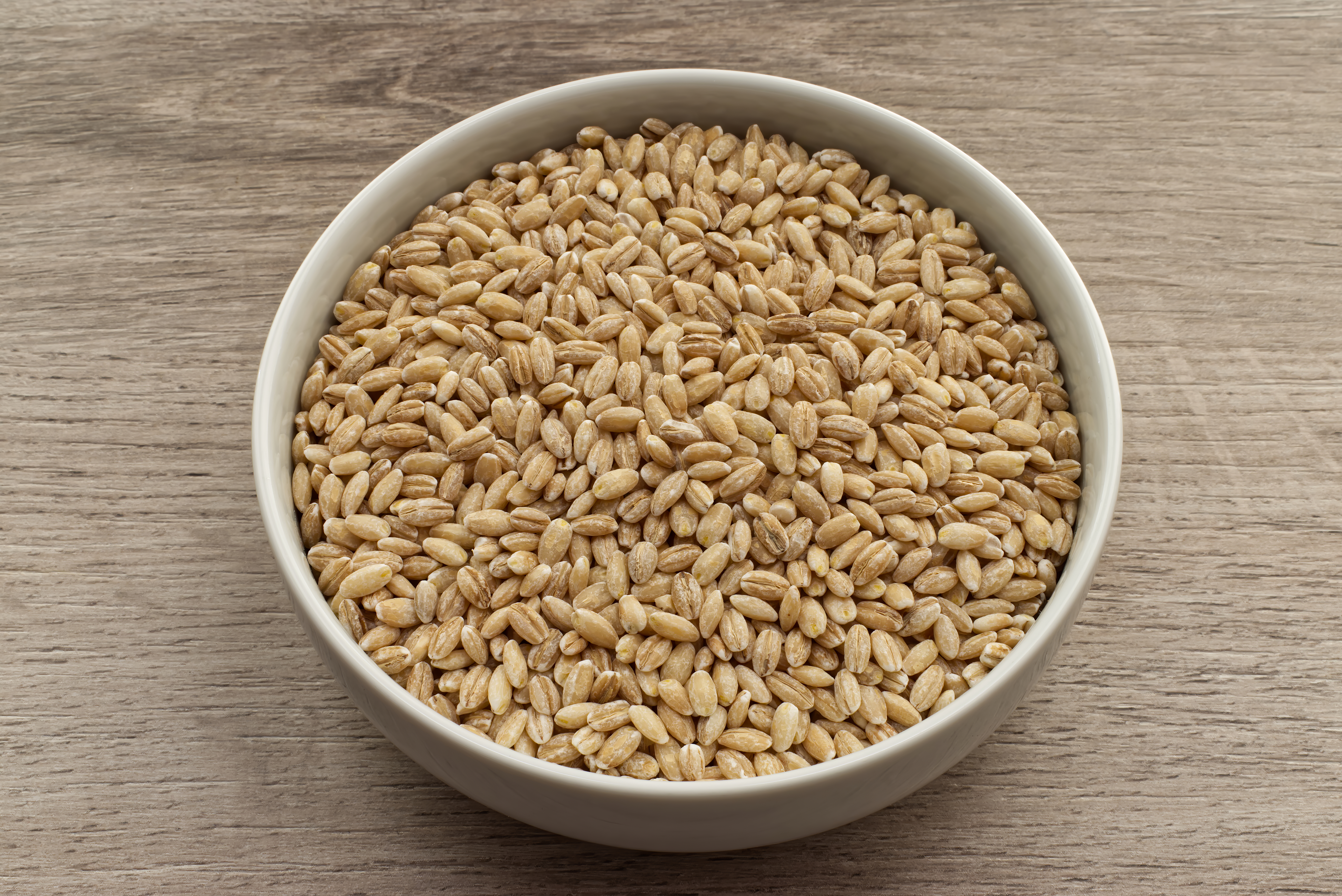
HI-1544
HI-1544, also known as Pusa Gold, is a high-yielding wheat variety developed for cultivation under irrigated conditions. It is valued for its bold and lustrous grains with excellent chapati-making quality. Farmers prefer HI-1544 due to its good disease resistance, adaptability, and consistent performance across different regions.
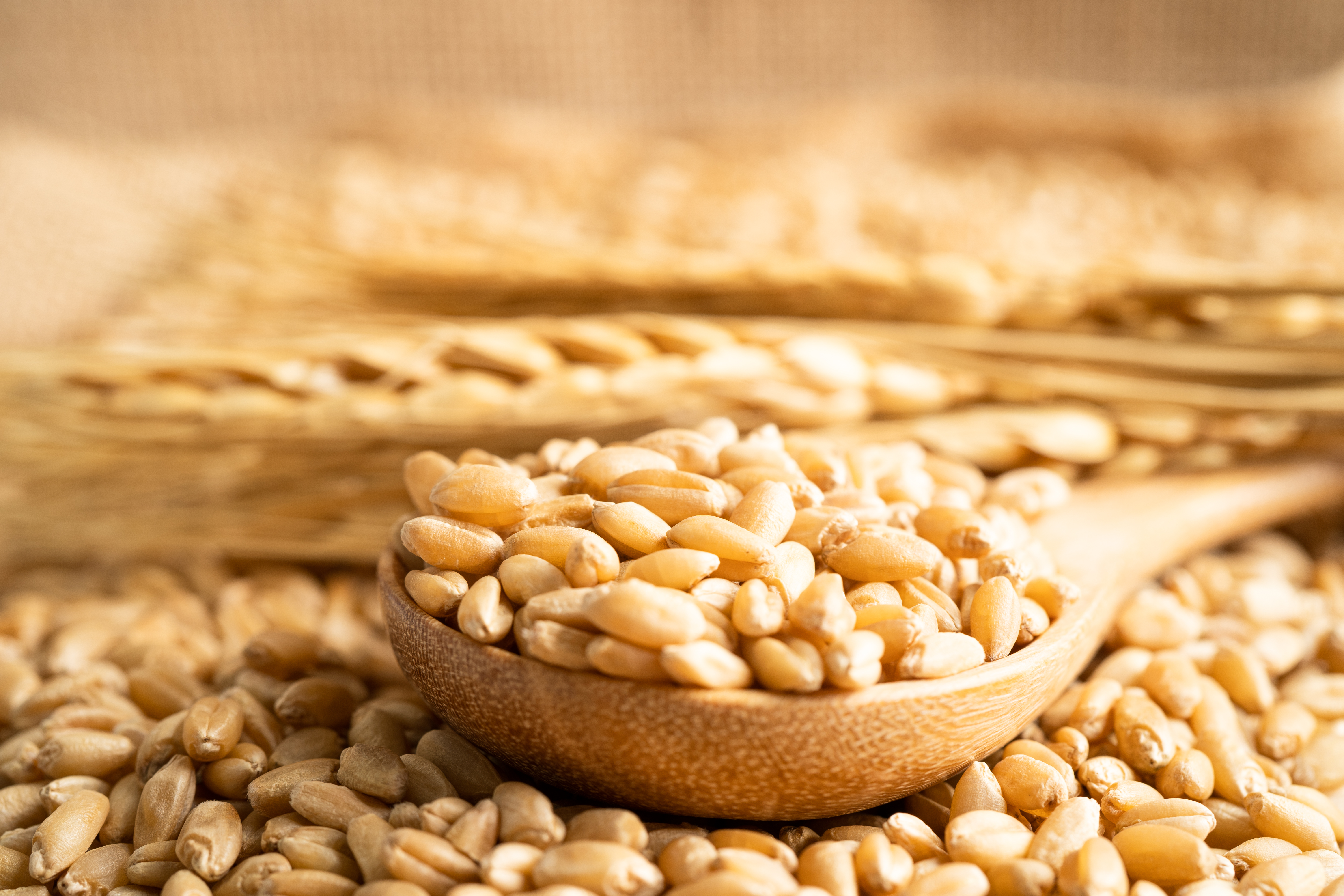
HI-1634
HI-1634 is a high-yielding wheat variety suitable for timely sown irrigated conditions. It produces bold grains with good chapati-making quality and fetches better market value. This variety is also appreciated for its adaptability and resistance to common wheat diseases.
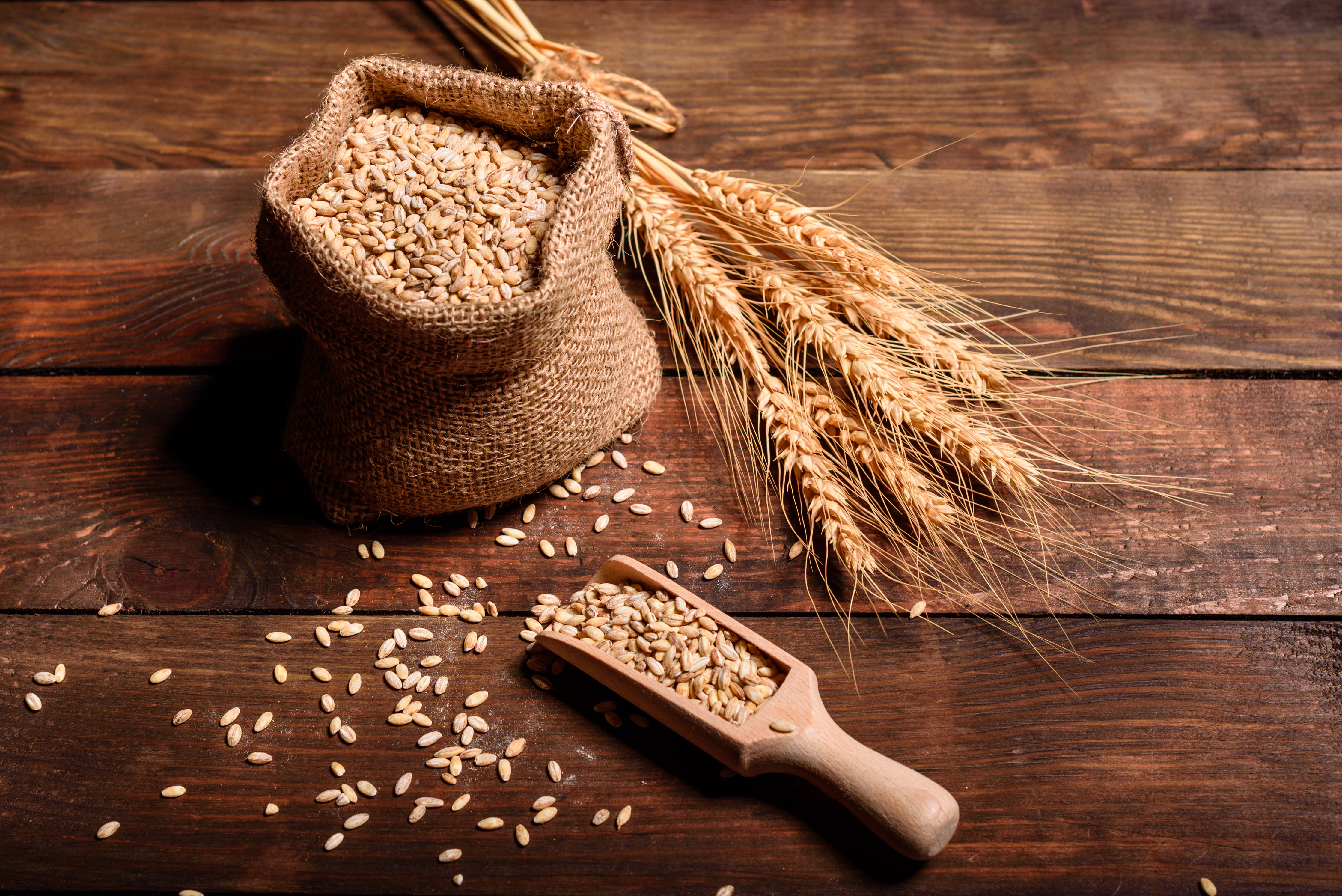
HI-1650
HI-1650, also known as Pusa Ojaswi, is a high-yielding wheat variety developed for timely sown, high-fertility irrigated conditions, especially in Central India. It is highly resistant to leaf and stem rust, making it a durable and disease-tolerant variety.
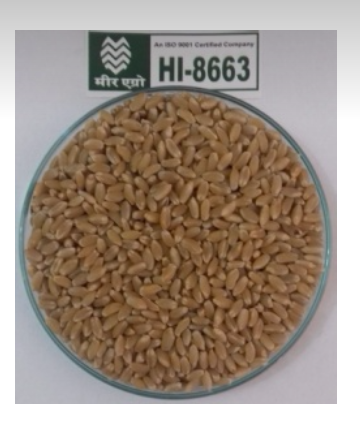
HI-8663
HI-8663, also known as Poshan, is a high-yielding and widely adapted wheat variety known for its excellent grain quality and stable yield. It is rich in nutrients like protein and micronutrients, making it ideal for nutritious chapatti, semolina, and pasta

HI-8759
HI-8759 (Pusa Tejas) is a high-yielding durum wheat variety developed for the central zone of India, showing excellent resistance to stem rust, leaf rust, and other diseases while providing an average yield of about 57 quintals per hectare with potential of over 75 quintals.

DBW-303
DBW-303 (also known as Karan Vaishnavi) is a semi-dwarf, high-yielding wheat variety developed by ICAR-IIWBR Karnal for timely sown irrigated conditions in the North Western Plains of India. It has exceptional resistance to yellow and brown rust diseases and produces high-quality grains with about 12.1% protein content, making it suitable for chapati and other food products.

GW-322
GW-322 wheat is a semi-dwarf variety known for its high yield potential of 60-65 quintals per hectare and is suitable for cultivation mainly in Madhya Pradesh and Uttar Pradesh regions. It matures in about 115-120 days, requires 3-4 irrigations, and produces bold, lustrous grains that are good for making chapatis.

GW-513
GW-513 (Gujarat Wheat 513) is a high-yielding wheat variety developed by the Wheat Research Station, SDAU, Vijapur, and notified in 2021. It is suited for timely sown, high-fertility, irrigated conditions in Central India, producing an average yield of around 58.5 quintals per hectare with a potential of 77.4 quintals.

GW-547
GW-547 is a high-yielding wheat variety noted for its excellent performance in terms of grain and straw yield. It was found to produce one of the highest grain yields among tested genotypes, comparable to varieties like HI-1650 and GW-322, with strong crop growth characteristics including the highest number of tillers per square meter and dry matter accumulation.

ABPL-303
ABPL-303, also known as Agrawal biotech super 303, is a high-yielding wheat variety developed by Agrawal biotech private limited in India. This variety is known for its robust growth, adaptability to diverse soil and climatic conditions, strong tolerance to pests and diseases, and superior grain quality, which leads to better marketability and higher profitability for farmers.

ABPL-114
ABPL-114, also known as Agrawal biotech 114, is a high-yielding wheat variety developed by Agrawal biotech private limited in India. This variety is known for its robust growth, adaptability to diverse soil and climatic conditions, strong tolerance to pests and diseases, and superior grain quality, which leads to better marketability and higher profitability for farmers.
Features
Shape and Size
Wheat seeds are oblong in shape, typically measuring 6 mm in length.
Seed Coat
The seed coat is papery, ranging from gold to pale yellow in color.
Nutritional Content
Wheat seeds have high carbohydrate and moderate protein content, essential for food value
Internal Structure
Seeds are made of about 85% endosperm, 13% husk, and 2% embryo by mass.
Specifications
| Technical Specifications of Wheat | |||||||
| SNO | Variety | Seed rate/Hact in KG | Sowing time | Maturity Days | Irrigation | App Yeild in qtl | Remarks |
|---|---|---|---|---|---|---|---|
| 1 | Lok-1 | 125 | 1-Nov to 20-Nov | 105-110 | 3-4 | 50-55 | Resistant to shattring, bold and shine grain, best for chapati |
| 2 | HI-1544 | 100 | Nov | 110-115 | 3-4 | 55-60 | Best for chapatti, Grain size medium and shiny |
| 3 | HI-1634 | 100 | Nov to Dec | 110-115 | 3-4 | 50-60 | Best for chapatti, Grain size medium and high Protein |
| 4 | HI-1650 | 100 | 1-Nov to 15-Nov | 115-120 | 4-5 | 57-73 | Best for chapatti. Resistant to Yellow, medium size and loose smut |
| 5 | HI-8663 | 125 | 1-Nov to 15-Nov | 115-120 | 4-5 | 60-80 | Best for chapatti. Resistant to Yellow,brown rust and loose smut |
| 6 | HI-8759 | 125 | 1-Nov to 15-Nov | 120-130 | 4-5 | 60-75 | Best for Pasta, Suzi and Daily use, bold and shiny |
| 7 | DBW-303 | 100 | 25-Oct to 15-Nov | 130-140 | 4-5 | 80-95 | Resistant to Yellow, low and kharif Rust, best for chapatti; Medium Grain, long ear head |
| 8 | GW-322 | 100 | 1-Nov to 15-Nov | 120-125 | 4-5 | 60-65 | Resistant to karnal bunt, best for chapatti |
| 9 | GW-513 | 100 | Nov | 110-115 | 3-5 | 55-75 | Best for chapatti, Dwarf Varity Seed shiny |
| 10 | GW-547 | 100 | 1-Nov to 15-Nov | 120-125 | 4-5 | 58-74 | Best for chapatti, Zink - 39 ppm, Iron - 40 ppm, Protein -11% |
| 10 | ABPL-303 | 100 | 1-Nov to 15-Nov | 120-125 | 3-4 | 75-80 | Dark Green leaves, more tillering, best for chapatti |
| 11 | ABPL-114 | 100 | 1-Nov to 15-Nov | 120-125 | 3-4 | 75-80 | more tillering, best for chapatti; sticks stem |
